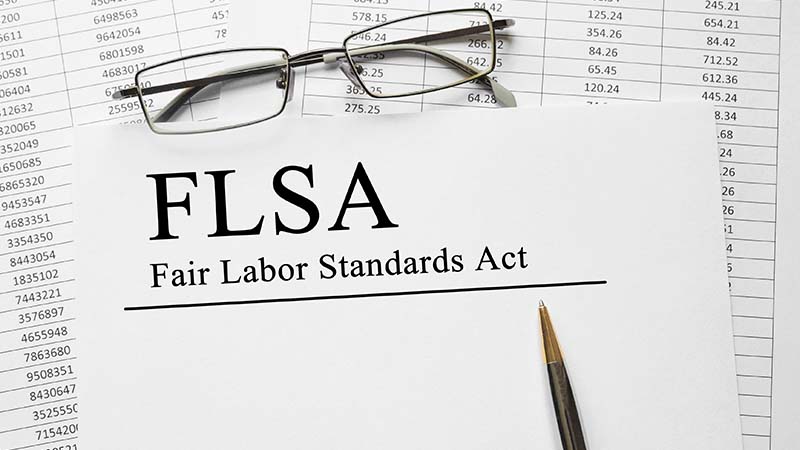Exempt vs Non-Exempt Employees: Simplify Employee Classification

In the United States, most jobs are governed by the Fair Labor Standards Act (FLSA), which classifies workers into two broad categories: exempt vs. non-exempt. Under the FLSA, non-exempt employees are entitled to overtime pay. Whereas exempt employees receive no overtime pay. This is regardless of how many hours exempt employees work.
Understanding the difference between exempt and non-exempt employees will help you determine the necessary calculations. Like how much salary one would receive or pay as an employee and employer, respectively. Misclassification between the two will not only result in substantial fines but will also not allow you to accurately estimate the cost of their efforts. Therefore, let us understand the key differences between exempt and non-exempt employees.
Who is an Exempt Employee?
Simply put together, an exempt employee is the one who is not eligible to receive overtime pay, no matter how many hours he/she works over and above the usual 40-hour workweek. Exempt employees are also not eligible for the minimum wage laws, as per the FLSA.
The Fair Labor Standards Act, as of January 1, 2020, mandates that any employee who is getting a fixed salary and earns a minimum of $684 per week or $35,568 annually, will be an exempt employee. However, every state has its own state labor laws.
The biggest advantage of being an exempt employee is the assurance of receiving a secure and constant paycheck at the end of every pay cycle. Exempt employees are eligible to receive retirement benefits like pension, healthcare insurance, paid vacation time, sick leaves, etc. However, the downside of being an exempt employee is that they are not eligible to receive overtime payment, even if they work extra-long hours to complete the task assigned to them.
Who is a Non-exempt Employee?
An employee who is eligible to receive the overtime pay, as per the provisions of the FLSA, for all hours worked beyond 40 in a workweek, is a non-exempt employee. Employees who come under this category of employment need to be paid at least the federal minimum wage as per the FLSA or State law for each hour they work. The employee should be given overtime pay. This overtime pay is one-and-a-half times more than their hourly rate for any number of hours they work beyond 40 hours each week.
Under the FLSA, an employee is non-exempt if he/she earns less than the weekly minimum wage of $684.
How to Differentiate Between Exempt and Non-exempt Employees?
This sounds straightforward, but the FLSA has a number of exemptions when it comes to overtime pay and minimum wage requirements. These include white-collar exemptions for administrative, executive, and professional employees, computer professionals, and outside sales employees, as well as the highly compensated workers exemption.
To understand if an employee is exempt or non-exempt, you’ll need to review the following three tests:
- Salary Level Test: According to the new overtime rules, employees paid less than $913 per week are considered non-exempt.
- Salary Basis Test: This determines if an employee is paid a guaranteed minimum wage/salary, regardless of the number of hours they work. This amount need not be the entire compensation, but the employee must have some amount of expected pay for any given workweek.
- Duties Test: This determines if the nature of the role is categorized as “administrative,” “executive,” or “professional.” The FLSA exemptions are limited to employees who are deemed to perform relatively high-level work, rather than work based on job titles or position descriptions.
Classifying employees as exempt or non-exempt has been a hot topic lately, and a particularly fruitful area for lawsuits – contributing to 17 percent of wage and hour litigations since 2007. With the new overtime rules and the recently released sick leave mandate (applicable in a number of states and cities), businesses will need to consider multiple factors when it comes to reassessing, and possibly reclassifying their workforce.
How to Manage Exempt vs. Non-exempt Employees?
There are a number of other approaches that businesses must consider as a part of the holistic people, process, and technology approach to effective employee classification. Below are four critical tips for successfully managing exempt vs. non-exempt employees.
1. Ask Employees to Schedule and Track Hours
The FLSA does not prohibit the tracking of exempt employees. In fact, the Department of Labor states that employers can require exempt employees to work in a specific shift and/or track their hours without affecting their exempt status. For example, Illinois (a jurisdiction with work time requirements) requires employers to keep a record of exempt employees’ hours worked. It is recommended that exempt employees are tracked separately from non-exempt employees.
2. Ensure Salaries Don’t Fluctuate Based on the Number of Hours Worked
No matter how many hours an exempt employee works, their salary should in no way be dependent on the hours that they work. If their hours affect the salary, and the salary fluctuates based on this, then the employee will no longer be considered exempt.
3. Update Corporate Policy and Job Requirements Accordingly
If a company needs its exempt employees to work in a particular shift and track their hours, then the company’s corporate policy needs to make sure that employees are not non-exempt. The best approach is to show that these additional requirements are part of the employee’s job responsibilities. They need to work specific hours to perform their managerial, professional, executive duties effectively. For example, shift supervisors need to work in the same shift as the employees. They are expected to oversee (and thus, should track their hours), but can still be considered non-exempt.
4. Train Employees on Policy Changes
Businesses should involve all parties affected by the new rules, ensuring everyone understands the changes. In addition, they should also understand the implications to employee management, morale, and compensation. As part of the communication process, it is important to conduct training. The training will help employees – particularly those in managerial roles – ensure that they can play an active role in unveiling the changes to the business. Changes to wage and hour regulations can have unintended consequences (such as these additional business costs), so engaging the workforce on any updates is crucial.
While reclassifying, increasing the salary threshold, or limiting overtime hours may seem like clear options to tackle the overtime rule changes. There are numerous considerations from a business, technology, and legal standpoint.
Consequences of Non-compliance with FLSA Regulations
Staying in compliance with the latest, and all legal regulations that touch your company and operations is not an easy task. It is a must for everyone who doesn’t want to face the consequences of non-compliance. Besides, non-compliance with FLSA regulations can be very expensive.
If you don’t adhere to the FLSA regulations, you could be legally accountable for back payments to employees as well as penalties, and/or illegal trials:
- If you fire or discriminate against an employee, and he or she has filed an FLSA complaint, then it can result in penalties of up to $10,000. A second offense can also result in an imprisonment sentence.
- If you fail to comply with the FLSA youth labor laws, then you will face criminal prosecution and penalties of up to $11,000.
- Willful or repeated minimum wage or overtime pay violations must be subject to a civil penalty of $1,100.
FLSA laws are nuanced and complex, therefore organizations need a solution that can automatically help in complying with FLSA.
How Can Intelligent Time Tracking Software Help You Better Manage Exempt vs. Non-exempt Employees?
One of the biggest causes of non-compliance with employment laws is inadequate or inaccurate time data. This can easily lead to payroll errors. Using an automated time-tracking solution, like Replicon, will help:
- Reduce time and payroll errors
- Avoid any costly litigation from FLSA breaches
- Collect all the time data in one place
- Make it easy for employees to report their work hours
Replicon offers employee classification capabilities and helps you apply different pay rules and pay codes to different employees. This makes it easier to pay your employees correctly as per the FLSA guidelines.
Here are some features that you get with time intelligence software:
- It is easy to use and fill the timesheets
- You can access and update employee information at any time
- You can view overtime easily in the timesheet and also track it in reports
- Calculate overtime pay, with required modifications (time and a half, double time, etc.) automatically
- Ability to integrate with your current systems; therefore enabling you to effortlessly move your work hours to your company payroll system
- You can review time data at any time, with historic records of changed entries and overtime hours
- A built-in pay rule engine ensures correct payment of wages as per the latest rules
- Ability to manage compliance on a global and local level, and apply it across the organization
In Replicon, you can manage exempt and non-exempt employees in default permission profiles. Assigning an “exempt” permission profile gives the employee a standard format timesheet. However, assigning a non-exempt profile gives the employee an “in-out” timesheet. Replicon provides a library of predefined pay rules for each US state, Canadian province and territory, and many other countries. Our platform creates and constantly updates these rules based on the labor laws of each jurisdiction.










